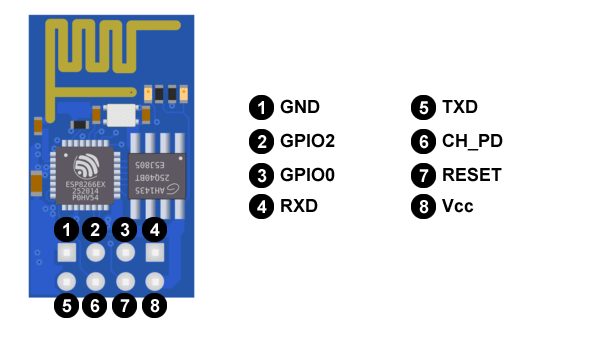What is ESP8266
About the IoT in a simple way to the civilian population. But what is happening with ESP8266, can burst the new trends of many sectors. It is an integrated chip with WiFi connection and compatible with the TCP / IP protocol. The main objective is to give access to any microcontroller to a network.
Atmel, the manufacturer that supplies Arduino with microcontrollers, has launched the ATSAMW25, a direct competition of ESP8266. This microcontroller is the one that incorporates the Arduino MKR1000.
The big difference between the ESP8266 and the ATSAMW25 is the price. While we can find modules with the ESP chip for € 3, the Arduino MKR1000 comes out for about € 40 with shipping costs.
The difference is abysmal although it makes sense. The most basic version of the ESP is 01 and is far from the ease of use of the Arduino MKR1000, although the objective of this article is not to make a comparison between them.
The great advantage of ESP8266 is its low consumption. It is the ideal product for wereables and IoT devices.

ESP8266 chip specifications
Hardware
It uses a Tensilica L106 32-bit CPU
Operating voltage between 3V and 3.6V
Operating current 80 mA
Operating temperature -40ºC and 125ºC
Connectivity
Supports IPv4 and TCP / UDP / HTTP / FTP protocols
It does not support HTTPS at first. If you do it through software on both client and server TLS1.2. The first implementation is still under development.
GPIO ports (general purpose)

It has 17 GPIO ports but only 9 or 10 can be used. The GPIO16 is special since it is connected to the RTC (Real Time Clock).
They can be configured with Pull-up or Pull-down resistance.
It supports the main communication buses (SPI, I2C, UART).
Electrical characteristics
Working voltage between 3V and 3.6V.
According to news from the CEO of Espressif, it admits input voltages of 5V and GPIO ports.
Source:https://programarfacil.com/podcast/esp8266-wifi-coste-arduino/